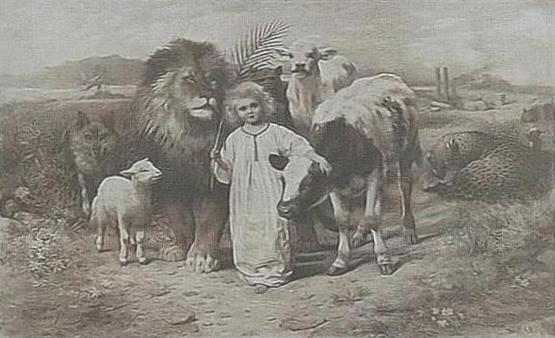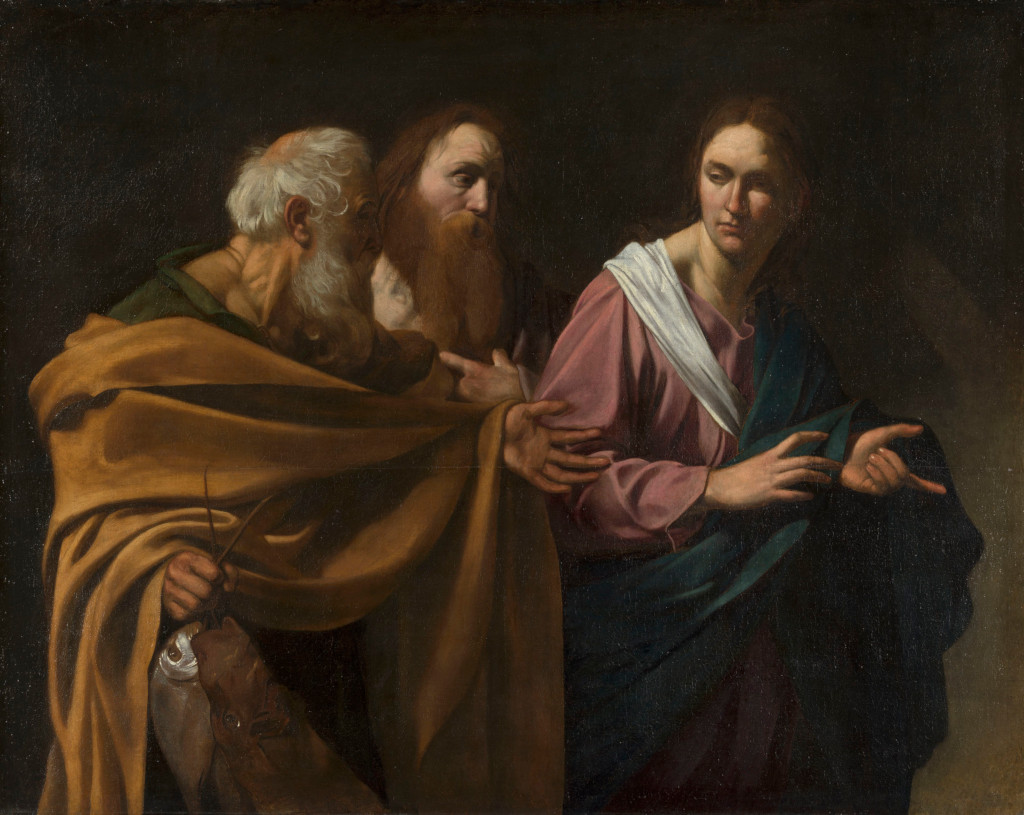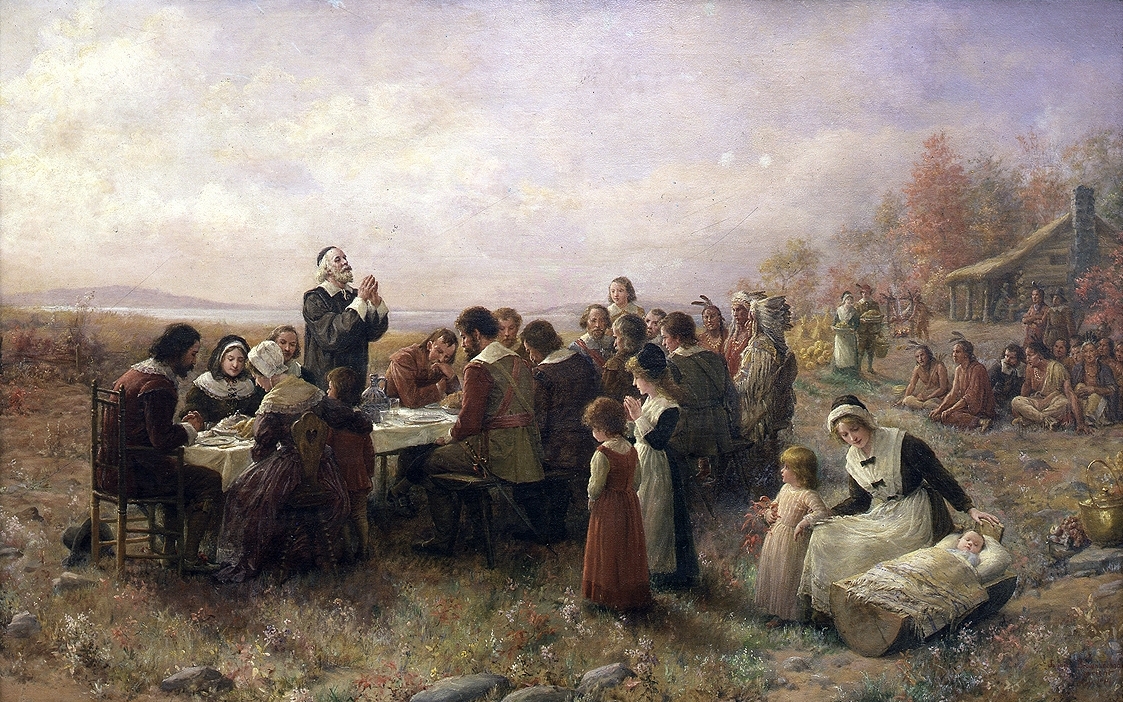
The prophet Isaiah, featured – and quoted by Jesus – in today’s readings…
* * * *
Sunday November 30 marks the end of 2014’s Season of Pentecost and starts the new liturgical (“church”) calendar year. That new church year starts with the First Sunday of Advent:
Advent Sunday is the first day of the liturgical year in the Western Christian churches. It also marks the start of the season of Advent [and] the first violet or blue Advent candle is lit… [T]he symbolism of the day is that Christ enters the church. Advent Sunday is the fourth Sunday before Christmas Day. This is equivalent to the Sunday nearest to St. Andrew’s Day, 30 November, and the Sunday following the Feast of Christ the King.
 See Advent Sunday – Wikipedia, emphasis added (with the image at right). See also Advent – Wikipedia, which noted that Advent is “a time of expectant waiting and preparation for the celebration of the Nativity of Jesus at Christmas.” The theme of Bible readings is to prepare for the Second Coming while “commemorating the First Coming of Christ at Christmas.”
See Advent Sunday – Wikipedia, emphasis added (with the image at right). See also Advent – Wikipedia, which noted that Advent is “a time of expectant waiting and preparation for the celebration of the Nativity of Jesus at Christmas.” The theme of Bible readings is to prepare for the Second Coming while “commemorating the First Coming of Christ at Christmas.”
The article added that for a time – starting about 300 A.D. – Advent was “kept as a period of fasting as strict as in Lent.” And just as Lent today is preceded by the celebration of Mardi Gras, so back in the olden days the penitential season of Advent was preceded by the “feast day of St. Martin of Tours,” in many places “a time of frolic and heavy eating, since the 40-day fast began the next day.” On the other hand, in “Anglican and Lutheran churches this fasting rule was later relaxed,” and somewhere around 1917 the Roman Catholic Church “abolished the precept of fasting … but kept Advent as a season of penitence.”
 The readings for Advent Sunday – in my church – are Isaiah 64:1-9; Psalm 80:1-7, 16-18; 1st Corinthians 1:3-9; and Mark 13:24-37. For more on Psalm 80 see On the Psalms up to November 30. (Which includes the image at left.) The full readings are at First Sunday of Advent. Here are some highlights.
The readings for Advent Sunday – in my church – are Isaiah 64:1-9; Psalm 80:1-7, 16-18; 1st Corinthians 1:3-9; and Mark 13:24-37. For more on Psalm 80 see On the Psalms up to November 30. (Which includes the image at left.) The full readings are at First Sunday of Advent. Here are some highlights.
As to Isaiah 64:1-9, verses 1 through 7 are generally summarized as “guilty in God’s presence,” while verses 8 and 9 begin a discussion of the “desolation of Jerusalem.” The International Bible Commentary said of verses 1 through 6 that they anticipate the rebuilding of the temple in Jerusalem, but warned that “neither the rebuilding itself nor the offering of many sacrifices” would in themselves please God. “What God wishes to see is the man who is humble and obedient to His word,” while to Him insincere worship “is no better than blatant idolatry.”
Beginning with verse 7, the prophet returned to the theme of the future well-being of Jerusalem. While God had “delivered us into the hand of our iniquity,” Isaiah called on Him to remember that “you are our Father; we are the clay, and you are our potter; we are all the work of your hand. Do not be exceedingly angry, O LORD, and do not remember iniquity forever.”
In 1st Corinthians 1:3-9, Paul began his letter to the members of the church in Corinth, a Greek seaport notorious for its depravity and licentiousness:
The name of Corinth had been a byword for the grossest profligacy, especially in connection with the worship of Aphrodite… This monstrosity – sexual perversion in the name of religion – overshadowed the life of the city as a mushroom cloud of moral destruction.
(IBC, 1347) Yet despite those surroundings – and the dissensions evident in the church – “Paul gives thanks! Assailed by Satan as they are, their spiritual life is evident… [I]n a missionary situation surrounded by pagan depravity, this is abundant cause for praise.” (IBC, 1350; and that’s not to to mention thanksgiving…) Paul noted, “you are not lacking in any spiritual gift as you wait for the revealing of our Lord Jesus Christ. He will also strengthen you to the end, so that you may be blameless on the day of our Lord Jesus Christ.”
Mark 13:24-37, followed after Jesus foretelling the Destruction of the Temple and the “Desolating Sacrilege” (Mark 13:1-23), and in this reading He foretold the trials and tribulations to come for His disciples. In Mark 13:24-26, Jesus told those disciples:
“In the days after that time of trouble the sun will grow dark, the moon will no longer shine,the stars will fall from heaven, and the powers in space will be driven from their courses. Then the Son of Man will appear, coming in the clouds with great power and glory. He will send the angels out to the four corners of the earth to gather God’s chosen people from one end of the world to the other.”
In doing so He quoted the Book of Isaiah – twice – and the Book of Daniel. See: 1) Isaiah 13:10, “The stars of heaven and their constellations will not show their light. The rising sun will be darkened and the moon will not give its light.” 2) Isaiah 34:4, “All the stars in the sky will be dissolved and the heavens rolled up like a scroll; all the starry host will fall like withered leaves from the vine, like shriveled figs from the fig tree.” And 3) Daniel 7:13, “In my vision at night I looked, and there before me was one like a son of man, coming with the clouds of heaven.”
See also Jesus and messianic prophecy. He followed with the lesson of the fig tree – not to be confused with Cursing the fig tree – Wikipedia – with the lesson, “Beware, keep alert; for you do not know when the time will come.” He concluded, “what I say to you I say to all: Keep awake.”
* * * *

“Peace, 1896 etching by William Strutt, based upon Isaiah 11:6,7…”
* * * *
The upper image is courtesy of Isaiah – Wikipedia, the free encyclopedia, with the full caption, “Isaiah, by Michelangelo, (c. 1508–1512, Sistine Chapel ceiling, Vatican City).”
The full “Mardi Gras” citation is Mardi Gras – Wikipedia.
The lower image is courtesy of Book of Isaiah – Wikipedia, which noted:
The Book of Isaiah has been immensely influential in the formation of Christianity, from the devotion to the Virgin Mary to … modern Christian feminism and liberation theology. The regard in which Isaiah was held was so high that the book was frequently called “the Fifth Gospel,” the prophet who spoke more clearly of Christ and the Church than any others. Its influence extends beyond the Church and Christianity to English literature and to Western culture in general, from the libretto of Handel’s Messiah to a host of such everyday phrases as “swords into ploughshares” and “voice in the wilderness.”
Isaiah 11:6-7, is part of the prophet’s well-known tribute to the Peaceful Kingdom to come: “The wolf shall dwell with the lamb, and the leopard shall lie down with the kid, and the calf and the lion and the fatling together, and a little child shall lead them.”


 Since then I – The Scribe – have been on a pilgrimage of my own. My brother and I took eight days to canoe out to some offshore islands in the Gulf of Mexico. Those islands – 10 or 12 miles offshore – included Half-moon Island, Cat Island and the
Since then I – The Scribe – have been on a pilgrimage of my own. My brother and I took eight days to canoe out to some offshore islands in the Gulf of Mexico. Those islands – 10 or 12 miles offshore – included Half-moon Island, Cat Island and the  Other sites include
Other sites include  So the theme here – in case I’m being too subtle – is one of “coming home in general.”
So the theme here – in case I’m being too subtle – is one of “coming home in general.” Note also that in medieval times, 12th Night marked the end of a winter festival that started on
Note also that in medieval times, 12th Night marked the end of a winter festival that started on  “Plough Monday,” which ends the full Season of Christmas, on January 6…
“Plough Monday,” which ends the full Season of Christmas, on January 6…
 * * * *
* * * *
 (Image courtesy of
(Image courtesy of